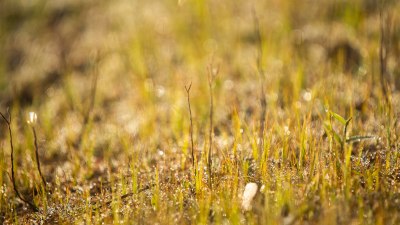Why the Ground Feels So Different When the Earth Wakes Up
Explore the sensations and phenomena experienced when nature awakens in springtime.

As winter relinquishes its grip and spring gently unfolds, the changes in our environment become profoundly noticeable. The ground beneath our feet feels different, hinting at the transformative energies at play within the earth. This awakening is not merely a change in temperature or the onset of blooms; it profoundly encompasses soil dynamics, microbial activity, and even our own sensory perceptions. Understanding this phenomenon requires a closer look at various scientific elements at play as nature begins its seasonal revival.
The Science Behind Soil Change
Soil is a living entity, undergoing constant evolution due to environmental factors, human interactions, and biological processes. As spring arrives, one might notice that the soil feels warmer and softer underfoot. These changes result from a combination of temperature increase, thawing, and microbial activity. In the winter months, the ground often freezes or becomes compacted, creating a hard, unyielding surface. However, with the arrival of warmer temperatures, the soil thaws, and its structure begins to loosen, allowing for easier movement. This loosening is critical for plant roots as they search for nourishment and stability.
Microbial Activity and Nutrient Cycling
As temperatures rise and moisture levels fluctuate with spring rains, microbial life in the soil awakens. Bacteria, fungi, and other microorganisms play essential roles in nutrient cycling, breaking down organic matter, and enhancing soil fertility. The awakening of these organisms transforms the soil composition, which may alter its texture and feel. A well-aerated soil teems with microbial life; thus, it may feel lighter and sponge-like underfoot compared to the denser, compacted soil of winter. This increased biological activity is accompanied by nutrient release, which not only benefits plant growth but can also create subtle changes in soil pH and texture.
The Role of Moisture in Soil Dynamics
Spring often brings increased precipitation, which can dramatically influence soil properties. Water acts as a powerful agent of change; when it penetrates the soil, it triggers various physical and chemical processes. For instance, the saturation of soil leads to increased porosity, making the ground feel softer and providing a conducive environment for plant roots to establish. As soil absorbs moisture, it also experiences a phenomenon known as soil swelling, wherein particles expand, resulting in a softer consistency. This moisture also enhances the tactile interaction humans have with the earth, making walking or jogging feel different than during the drier winter months.
Seasonal Sensory Experiences
The awakening of the earth in spring is not just a physical sensation but also a sensory experience that can heighten emotional responses in individuals. Our sense of touch becomes more attuned to the subtleties of the ground. The coolness of damp soil contrasts with the warmth of developing sunlight. The sensation of grass beginning to grow underfoot or the soft earth where seeds are sprouting elicits a feeling of renewal and hope. Engaging with the earth physically allows us to reconnect with nature on a holistic level. Sensory experiences in springtime, whether they involve squishing mud between our toes or feeling the gentle spring breeze, connect us more deeply to the cyclic patterns of life.
The Impact of Wildlife Activity
The resurgence of animal life during spring further contributes to the changing feel of the ground. As mammals emerge from hibernation and migratory birds return, their activity impacts soil dynamics. As larger animals traverse the landscape, they inadvertently aerate the ground and assist in seed dispersal, which can subsequently change the composition and texture of the soil. Earthworms, for instance, become more active as the earth warms and moistens, tunneling through the soil and enhancing its structure. Their movements help create channels for air and water, improving the overall health of the soil. This infusion of life generates tactile differences as they contribute to the soil's texture and resilience.
Ground Cover and Plant Growth
The emergence of ground cover plants, such as grasses and wildflowers, infuses the landscape with vibrant colors and textures. As these plants grow, they contribute to the overall feel of the ground and impact how we experience our environment. Soft grasses can provide a plush feel underfoot, while emerging blooms can affect how we perceive our surroundings, adding a touch of beauty that complements the tactile experience. The presence of extensive ground cover also stabilizes the soil, preventing erosion and further enriching the tactile experience of walking or playing outdoors.
Psychological Connection to Nature
There is significant research supporting the psychological benefits derived from interacting with nature. When the earth wakes up, our mental state often shifts alongside it. The vibrant colors, melodic sounds of birds, and the fresh scents of spring can evoke feelings of happiness and contentment. Engaging with the earth allows us to escape the stresses of modern life. The grounding nature of walking on soft, yielding soil can be meditative, promoting emotional well-being and overall mental health. By reconnecting with our environment, we can experience reduced anxiety, an enhanced sense of community, and a greater appreciation for the natural world.
Seasonal Reflections and Awareness
As we observe these changes in our environment, it becomes necessary to reflect on our relationship with the earth. The differences we feel when the ground awakens can serve as a reminder of the importance of sustainability and stewardship. Understanding the delicate balance of ecosystems encourages a greater appreciation for our role in preserving natural spaces. Through mindful engagement with our surroundings, we can contribute to a healthier planet. This includes practices such as gardening, supporting local conservation efforts, and minimizing our carbon footprint. By nurturing our connection to the earth, we ensure that future generations can also enjoy the rich sensory experiences that accompany the changing seasons.
The Tactile Experience of Renewal
The changing sensations of the ground as the earth awakens from its winter slumber encompass a variety of scientific, ecological, and personal elements. From the loosening of soil and the resurgence of microbial life to the aesthetic pleasures provided by blossoming plants, every aspect contributes to the unique experience of spring. We can celebrate and embrace these changes in tactile sensation, allowing them to deepen our connection to nature and inspire us to take action towards environmental stewardship. As we return to the earth and feel the ground awakening beneath our feet, we are reminded of the incredible cycle of life that unfolds each year, filled with renewal, growth, and limitless possibilities.











